Investing In Your People

Gain Workplace Efficiency by Focusing on the Needs of Your Team
WHAT DOES INVESTING IN YOUR PEOPLE MEAN? YOU’VE PROBABLY HEARD ALL THE BUZZWORDS AND SUGGESTIONS, FROM BENEFITS AND TRAINING TO EVENTS AND FUN FRIDAYS.
But are those trends truly engaging employees, and how do you know if your efforts are really working? It’s a common struggle. While many leaders attempt to make employee investment a priority, only 32% of American employees feel engaged at work, according to Gallup. Clearly, there’s a disconnect.
ALL YOU NEED TO KNOW ABOUT INVESTING IN YOUR PEOPLE
Having disengaged employee’s leads to a lack of efficiency in your business. Research shows that stressed, overburdened and disengaged employees are less productive and less efficient than their peers. In fact, work overload decreases employee productivity by 68%, while employees who feel engaged have 27% higher chances of reporting “excellent” performance.
When employees feel excited to come to work every day, however, overall productivity surges. Great leaders and managers use this fundamental truth not only to get more out of their workforce, but also to give back to the people who make their success possible.

What do we mean by investing in your employees? Let’s get to it—it’s more than ping pong tables and happy hours. For management and leadership, investing in people means critically examining five major elements of the employee experience:
Training
Benefits
Motivation
Culture
Listening
Any organization that gets these five elements right will have an engaged workforce that is head-and-shoulders above the rest when it comes to helping customers and creating novel solutions to common challenges. Inspiring employees from these five starting points can transform the work experience for everyone.
HOW TRAINING HAS EVOLVED
Training is one of the most important starting points for leaders looking to invest in the employee experience.
This is because it is one of the first experiences new employees have with a company. After the hiring process and orientation are complete, every new employee goes through some degree of training. The depth, scope, and delivery of training are crucial to employee engagement.
Every employee needs professional development related to their immediate position, but employers who use training to offer opportunities to advance have a simple, effective way to improve employee engagement and motivation. Keep in mind, training is a never-ending process and should be customized based on the requirement.
For instance, new executive-level employees need access to extensive training materials that new entry-level employees may not. Nevertheless, ambitious “A-player” entry-level employees rarely feel comfortable staying in their entry-level position.
An organization with a comprehensive learning management system in place can offer training materials to all of its employees and track their development over time.
You may find that an employee originally hired for an entry-level position displays aptitude for a much more complex one. If you give that employee the opportunity to develop those skills, you may earn a top-performer.
Learning management systems ensure that employees have the freedom to choose their career path. Development courses, skills training options and even one-to-one coaching sessions all make an enormous difference in overall employee engagement. In addition, coaching can be implemented across the spectrum with training offering the “what” and coaching offering the “how”.
Coaching is especially effective when it comes to higher-level positions. It tells a director or executive that they are important enough to merit one-on-one mentorship, and ensures the individual is constantly learning about developments in the field.
If you can find a way to implement a mentorship program at every level, you’re sure to see the overall improvement in performance.
WHAT “BENEFITS” MEANS IN TODAY’S WORK ENVIRONMENT – INVESTING IN YOUR PEOPLE
“Benefits” is a term that has undergone a subtle change for many years, and continues to change today. As a business leader, you’ve probably seen what other workplaces offer and wondered if you have to provide the same benefits to compete.
Recent trends in employee benefits packages such as unlimited vacation time or remote work opportunities have crossed the boardroom of plenty of organizations today.
While it may seem like any organization that wants to retain top performers needs to “check all the boxes” when it comes to benefits, that’s not always the case. For instance, consider the two biggest trends filling LinkedIn feeds of top managers:
Unlimited Vacation: This sounds attractive at first glance, but it does not necessarily equate with a company culture that invests in employees. Engaged employees who enjoy going to work don’t need employers to make these kinds of promises if they are offering a vacation package that corresponds to work-life balance. In other words, it doesn’t have to be all or nothing.
Remote Work: Working from home offers great freedom to employees, but that freedom doesn’t always lead to increased employee engagement. The ability to work remotely needs to be based on both the employer and employee’s shared cultural values in order to make sense. Most workers want flexibility, however, don’t feel pressured to offer full remote work if the position requires face time. The important thing is that employees feel that their needs matter.
In both cases, company culture determines which benefits are appropriate. Engagement skyrockets when employee benefits represent values that both employers and employees share. A family-first company may offer comprehensive daycare and family health insurance plans to its employees, whereas a laid-back creative firm may prioritize travel and vacation time.
In order for benefits to accurately represent company culture, they must authentically represent values that everyone in the company actually shares. This leads to a sense of mutual trust and respect, which is more important than any single benefit on its own.

MOTIVATION: ALLOW EMPLOYEES TO BRING THEIR WHOLE SELVES TO WORK
There are many ways employers can motivate employees to do their best work – and money isn’t always at the top of the list. It’s critical to pay employees what they are worth, of course. But what often motivates employees is a sense of belonging that comes from an authentic company culture they feel like they are a part of.
Investing in your team is a critical step towards building this bridge between leadership and the workforce. Learning about individual team members and finding ways to celebrate their successes are key to keeping them engaged at work.
You can’t engage people if you don’t know anything about them, so knowing their needs are important. When office employees show up, clock in, work, and clock out without interacting with leadership or each other, it limits your ability to understand what makes them tick.
One of the most important ways to engage anyone, including a team member is to care about their motivations, interests, families, hobbies, etc. In other words, allow them to bring their whole selves to work.
Once you know your employees, even something as simple as monthly achievement awards can transform the workplace and take on a new meaning when investing in your people. Instead of offering generic bonuses, managers can personalize bonuses to reflect their employees’ authentic ambitions and desires.
This can take a variety of forms. If leadership knows that a particular IT specialist is also an amateur video game developer, it could reward that employee’s performance by sponsoring his participation in a video game development course. If another employee is a martial artist, the company may choose to sponsor her participation in a national or international competition.
These employee benefit strategies mirror the personalization strategies that companies have long-used to attract and retain customers. Employers who know their employees have far more powerful engagement and motivation opportunities at their disposal.
CREATE A CULTURE OF OWNERSHIP IF YOU PLAN ON INVESTING IN YOUR PEOPLE
Training, benefits, and motivation only go so far, unless they authentically represent company culture. It is about living up to your commitments, whether it’s the amount of break time or rewarding exactly what and you promised. The key is to focus on a promise kept vs. a promise made and to make this a process continuously followed by everyone on the team.
A give and take respect relationship with employees helps to build a trustworthy culture, while a company culture that empowers employees to be part of the big picture and to feel like they make a difference, drives engagement.
Creating a culture of ownership requires that everything, from training and benefits to awards and motivation, is done authentically. Employees can easily tell the difference between a corporate initiative and an engrained employee-first culture. For example:
Training can do more than simply teach employees new skills. It is the perfect opportunity to show employees how those skills fit within the bigger picture of the company’s value-generating processes.
Benefits don’t just incentivize employee retainment. They also offer an opportunity to authentically share culturally important values.
Motivational awards are more than a means to formalize a reward system. They can energize an entire team to boost productivity and spend time focused on achievement.
Leadership has to reinforce a company culture that gives each team member a satisfying role in the big picture. They must be allowed to act like an owner no matter their position and be allowed to contribute ideas, creating a consultative approach vs. a top-down directive.
Top managers also need to make themselves available, giving everyone in the company a voice to be heard. Ideally, communication channels between employees and leadership should be open, and feedback guaranteed.
LISTENING – IT GOES BEYOND SURVEYS
The concept behind developing a culture of ownership is called Servant Leadership. A leader who serves is one who puts the needs of others first and helps them develop and perform at the highest possible level. The first step is listening and the second is empowerment.
Steve Jobs said, “It doesn’t make sense to hire smart people and tell them what to do; we hire smart people so they can tell us what to do.” This piece of advice is a good one. Listen to your people. Allow for a free exchange of ideas and have an open door to leadership.
Ask your people to voice out their opinion and give them the confidence to say what’s on their minds. Whether you do this with forums, HR panels, directly to leadership through email or in a town hall setting, ask for your team’s input and follow their advice.
Give them additional leadership responsibilities through committees and planning teams. Make them a part of the process, then listen and implement.
Employee surveys are another way to find out what your team is feeling, but instead of letting surveys languish in a database, servant-leaders can use them to identify and address the biggest problems facing their workforce. Getting honest, anonymous opinions on the workplace environment is crucial to addressing problems that may not otherwise be voiced.
When done right, the supervisor survey lets organizations bring up and address structural problems they might not otherwise know about. Even if the company can’t solve the problem immediately, simply owning the situation and communicating with employees can make them feel heard and encourage the culture of ownership critical to employee engagement.
INVEST IN EMPLOYEES TO IMPROVE CULTURE AND PERFORMANCE
In today’s hyper-competitive market environment, excellent outcomes are part and parcel to any businesses’ success in any industry. Customers expect more than ever, and organizations are looking for increasingly sophisticated methods to engage them.
But the best way to engage customers is to engage employees first. Engaged employees who exercise their strengths on a daily basis will outperform a larger, better-equipped but disengaged workforce many times over.
When it comes down to it, people are the most valuable responsive asset in any organization. By investing in your people, you’ll improve skill sets to provide better quality to your clients, build a higher-performing team and breed the leaders of tomorrow—all in your own backyard.
Implement these strategies to invest in your people, and watch your employee productivity increase, turnover decrease and talent acquisition soar. Most importantly, you’ll be creating a culture that stands out and giving back to the people who make your organization a success in the first place.

About Personiv
At Personiv, we know employee engagement and live the value of investing in our people. In fact, it’s one of our three pillars (along with giving back to the community and always focusing on quality).
For more than 35 years, our dynamite and engaged team has provided a full suite of outsourced services, from back office and accounting to customer care and creative. If your team is overworked and burdened by tedious, transactional tasks, find out how we can help you focus on your organization’s priorities. Visit us at personiv.com to find out more.
Follow these actionable steps that you can start applying to your organization today to start investing in your people.
Get the complete eBook.
WITH PERSONIV PERFORMING YOUR BUSINESS PROCESSES
YOU CAN ENJOY IMMEDIATE RESULTS PREPARED ON-DEMAND AT A PRICE POINT THAT TRADITIONAL OUTSOURCING CANNOT MATCH.




